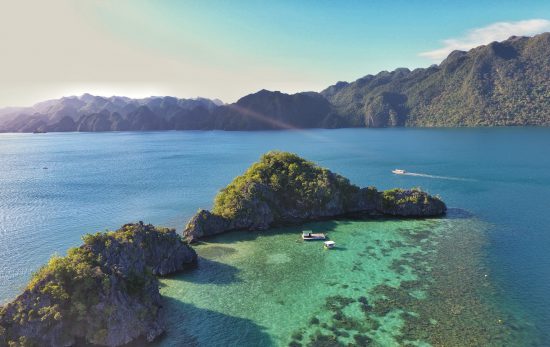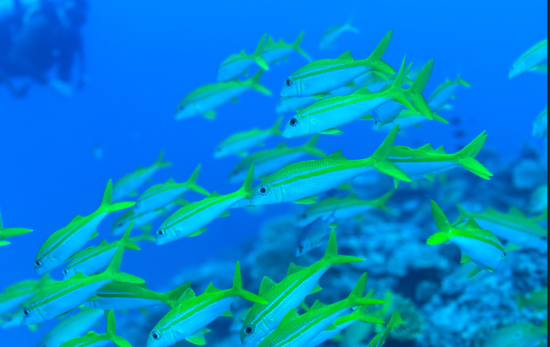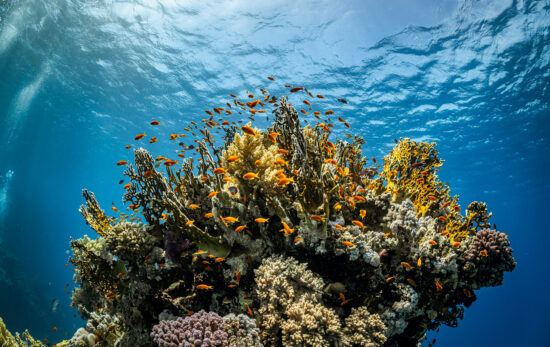Manta rays are a symbol of elegance, freedom and majesty. Meeting these intelligent and social creatures is a fleeting yet powerful experience. In fact, they are known to approach scuba divers, seemingly trying to deduce information about these strange bubble-blowing fish. Perhaps this is due to their large brain-to-body ratio. Regardless, watching manta rays, fly, flip and dance through the water is an unforgettable experience.
If you’re ready for a dive to remember, check out these 10 dive sites. They are the best sites in the world for diving with manta rays.
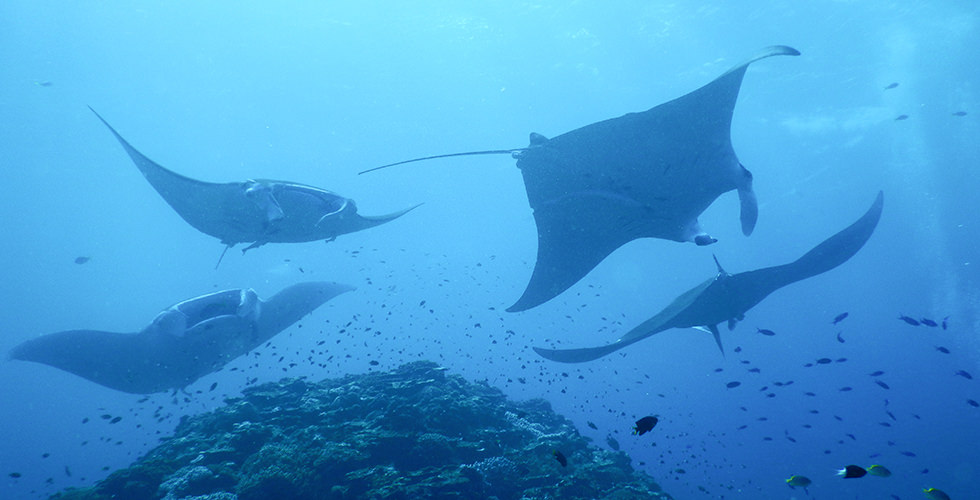
1. Ukulhas Thila – Ari Atoll, Maldives
The Maldives should be named “The Land of Mantas and Whale Sharks.” Because sightings are nearly guaranteed under the correct conditions, divers from around the world flock to these idyllic islands. Perhaps the most predictable dive site is Ukulhas Thila, a current-ravaged pinnacle between 50 and 100 feet (15 and 30 meters). The top of the reef is used a cleaning station by the manta rays. Although land-based dive shops and resorts are available, the best way to reach and enjoy Ukulhas Thila is by luxury liveaboard.
Also, if you don’t care about diving with manta rays, but would like to snorkel with them, be sure to schedule a stop in Hanifaru Bay for an observation of cyclone feeding, otherwise known as a manta ray feeding frenzy. To protect these gentle giants, scuba diving is no longer allowed in Hanifaru Bay.
- Dive Type: Pinnacle/Reef
- When to Go: December to April
Recommended Liveaboard: Scubaspa Yang
2. Keauhou Bay – Kona, Hawaii
One of the best night dives in the world and one of the best manta ray dives in the world, Kona’s Manta Night Dive is a memorable experience. Under the dark of night, divers descend while the boats above and the dive masters below illuminate the area using high-powered spotlights. These lights attract plankton, which in turn attracts the mantas who come to enjoy the feast. Divers have the best view as the graceful creatures flip and fly in the waters above.
- Dive Type: Flat Bottom
- When to Go: April to October
Recommended Liveaboard: Kona Aggressor
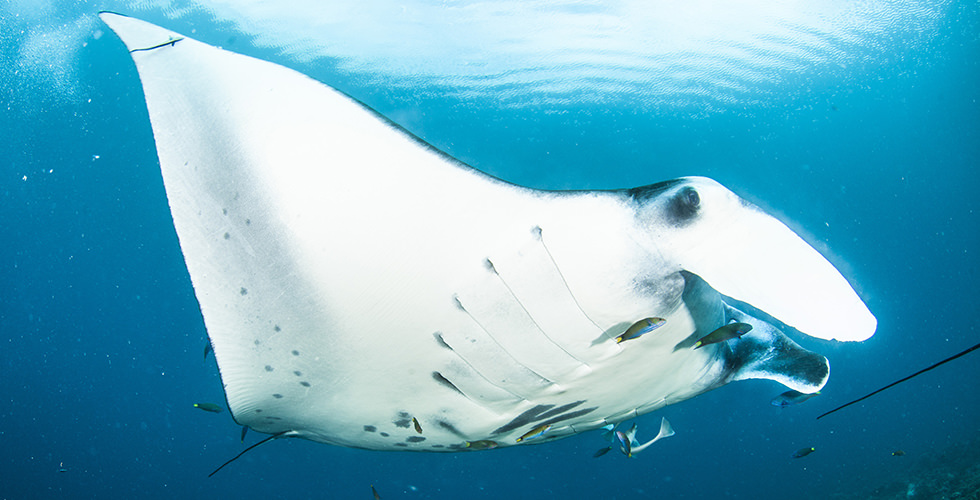
3. Manta Ridge – Mi’il Channel, Yap
Yap is yet another destination that has manta rays to thank for its scuba diving fame. In particular, the Mi’il Channel in the northwest is a well-known cleaning station. At the beginning of the channel, you’ll find Manta Ridge where sightings of manta rays are almost guaranteed. Most of the individuals who visit the channel are seen regularly. They even have names! Your divemaster should be aware of these and can tell you which of the mantas you saw during your visit.
- Dive Type: Drift
- When to Go: November to May
Recommended Dive Resort: Manta Ray Bay
4. The Boiler – Revillagigedo Islands, Mexico
Far removed from the Mexican mainland, the Revillagigedo Islands lie 375 miles (600 kilometers) off the coast of Baja California. Each winter, over 500 Giant Oceanic Manta Rays make their way to San Benedicto Island, one of the four islands in the archipelago. The best site for viewing these creatures is The Boiler, a giant pinnacle reaching within a few feet of the surface. Keep in mind that the only way to reach the Socorro (Revillagigedo) Islands is by liveaboard.
- Dive Type: Pinnacle
- When to Go: November to June
Recommended Liveaboard: Vortex
5. Manta Alley – Komodo, Indonesia
With up to 30 manta rays in a single dive, current-heavy Komodo National Park delivers up the fantastic dive site known as Manta Alley. The mantas come here to be cleaned amongst the coral and current. Dive in and hold on while you wait for the mantas to appear. When they do, you’ll want to make sure your camera is ready. These creatures love to curiously check out the divers in the water.
- Dive Type: Drift
- When to Go: September to February
Recommended Liveaboard: Amira
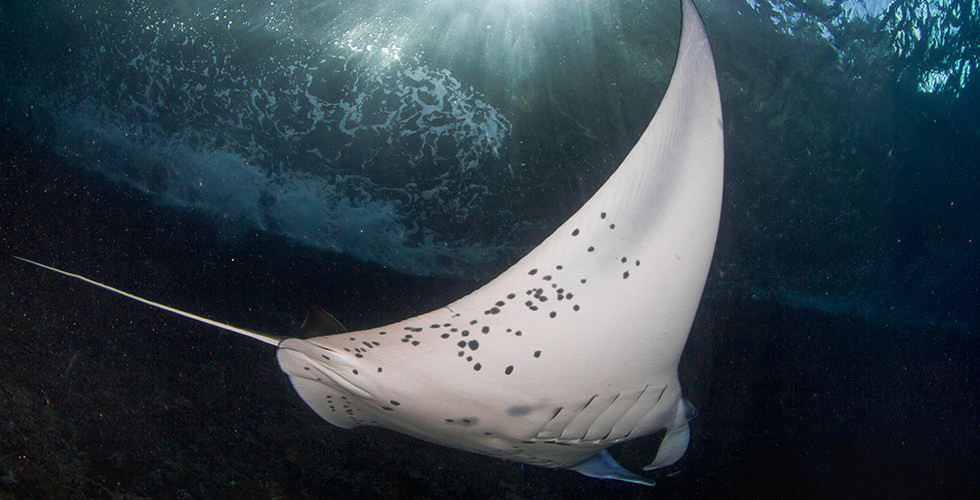
6. Cabo Marshall – Galapagos Islands, Ecuador
Just off the northeastern shore of Isabela Island, Cabo Marshal features a wall that dips to 130 feet (42 meters). It’s so common to see Giant Oceanic Manta Rays at this site, that Cabo Marshall is on nearly every liveaboard itinerary. In the water, you’ll simply drift along in the company of the rays, noticing how graceful and curious they are. Back on the boat, keep an eye out for the breaching behavior which is commonly observed in the area.
- Dive Type: Wall / Drift
- When to Go: December to May
Recommended Liveaboard: Galapagos Sky
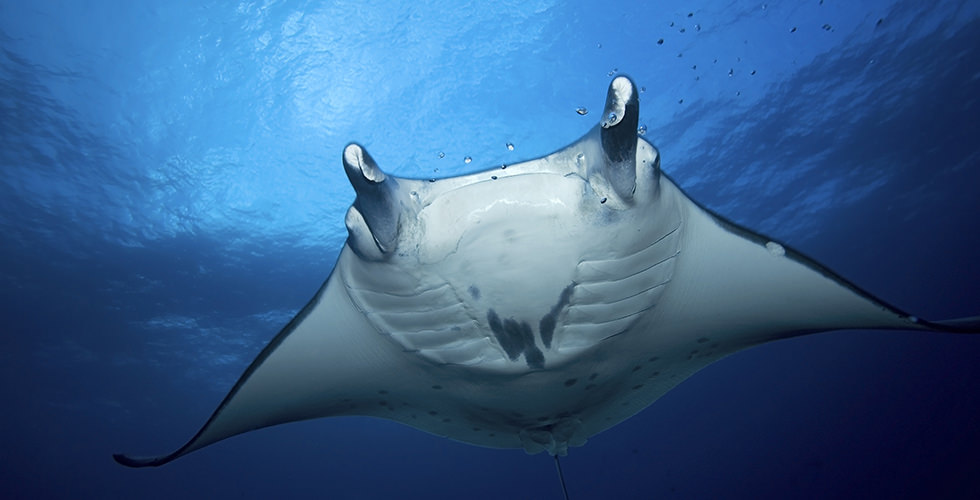
7. Koh Bon – Similan National Marine Park, Thailand
Perfect for beginners and experts alike, Koh Bon is a manta ray hotspot. It’s located to the Northwest of the Similan Islands yet still included in the Similan National Marine Park. The main dive site is on the southwestern point where a step-down ridge rises from a depth of 148 feet (45 meters). Divers usually hang out on the western side of this ridge, hoping to get a glimpse of the area’s 20 resident manta rays. Most divemasters believe that these rays migrate between Koh Bon and Koh Tachai during the diving season. The experts on your liveaboard should be able to tell you if the mantas are in the area during your holiday.
- Dive Type: Ridge
- When to Go: October to May
Recommended Liveaboard: Thailand Aggressor
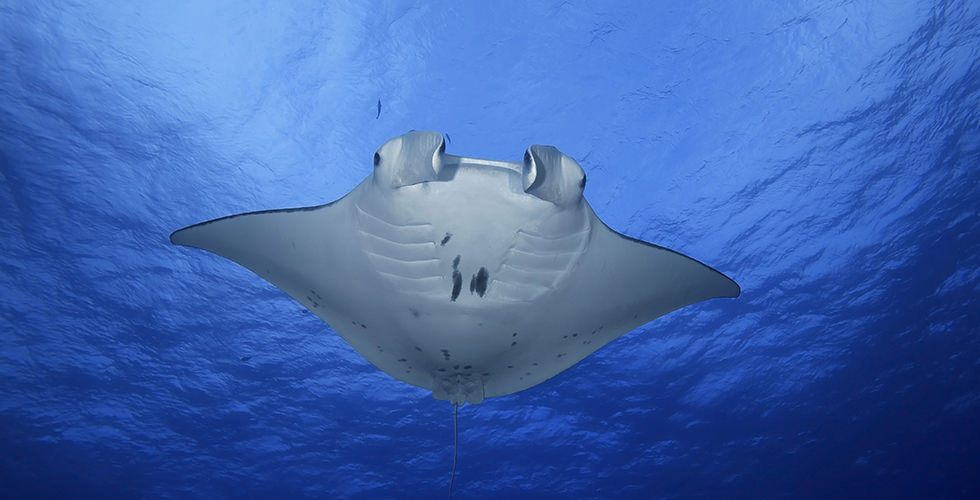
8. Lighthouse Bommies – Lady Elliot Island, Australia
To tell the truth, you’ll probably see manta rays at multiple dive sites around Lady Elliot Island. But Lighthouse Bommie, at 45 feet (14 meters), is a favorite cleaning station among the rays. Hours could be spent around the bommie, watching the acrobatic show as manta rays dive and twirl overhead. Snorkeling from shore is also a possibility here, but to get up-close-and-personal to the rays, you’ll want to have a tank on your back.
- Dive Type: Bommie
- When to Go: June to August
Recommended Dive Resort: Lady Elliot Island Eco Resort
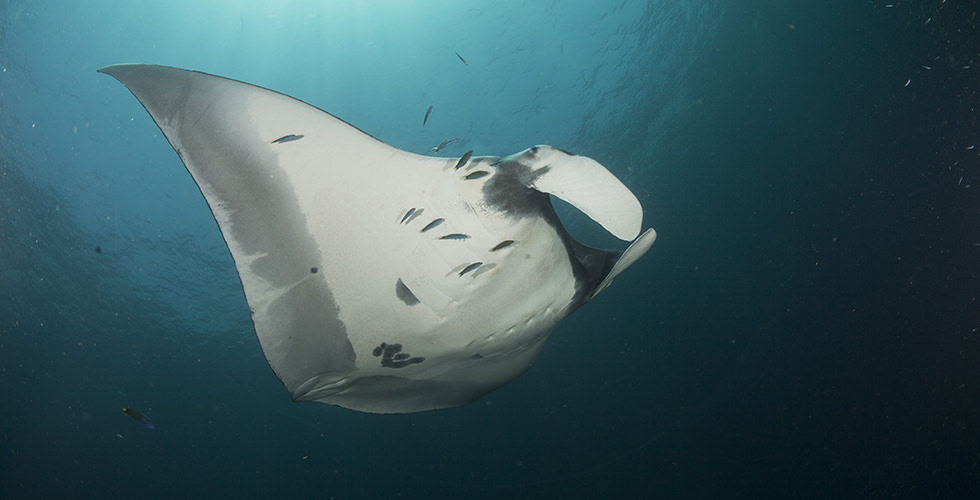
9. Manta Reef – Tofo, Mozambique
A fascinating set of circumstances has created Manta Reef, a dive site with 3 cleaning stations and sightings of up to 20 manta rays at one time. In fact, approximately 900 Reef Mantas and 100 Oceanic Mantas visit the site every year. The reason for such high numbers in two-fold. First, a plankton-rich current runs through Tofo, giving the mantas plenty of food. Second, the journey to Tofo is wrought with predators, including 11 species of shark. Many of the mantas who come to Manta Reef have suffered shark bites. The wounds from these attacks need to be cleaned, creating a need for so many cleaning stations and ensuring the mantas stay at the stations for an unusually long period of time. In most cases, each individual will be at Manta Reef for over an hour.
- Dive Type: Reef
- When to Go: Year-round, except February and August
Recommended Dive Resort: Liquid Dive Adventures
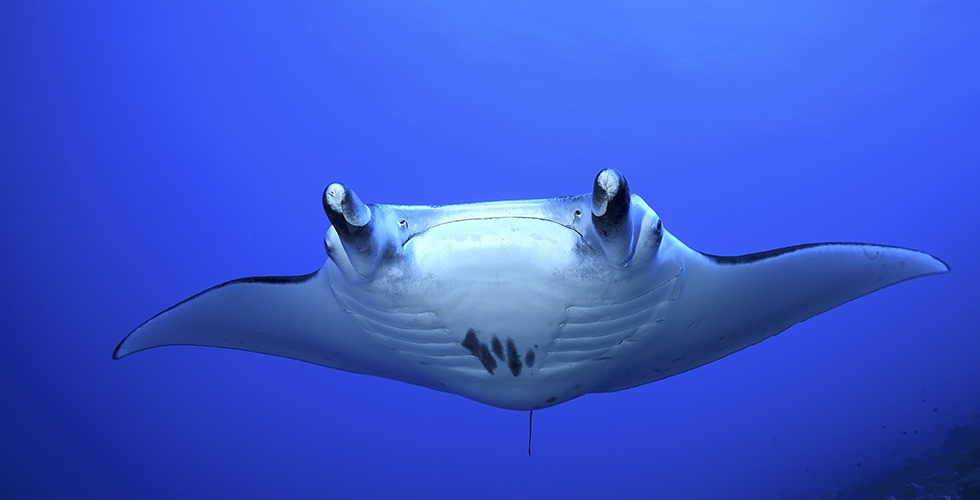
10. German Channel – Koror, Palau
While you may have heard of Yap as the destination in the South Pacific for manta rays, Palau is creating its own manta ray fame. The German Channel is one of the top three dive sites in this island country, and it also happens to be a manta ray cleaning station. On the northern edge of the channel, a reef provides shelter to the manta’s favorite fish, the wrasse. At about 50 feet (15 meters), the manta rays wait patiently as the fish clean their bodies. Some sharks get in on the action too, making this the perfect “bath time” show.
- Dive Type: Drift
- When to Go: October to May
Recommended Liveaboard: Ocean Hunter III
These may be the 10 best sites for nearly guaranteed sightings, but there are hundreds of locations around the globe where you might encounter a majestic manta ray. Get in touch with a PADI Travel Scuba Travel Expert to start planning your manta ray experience today.
